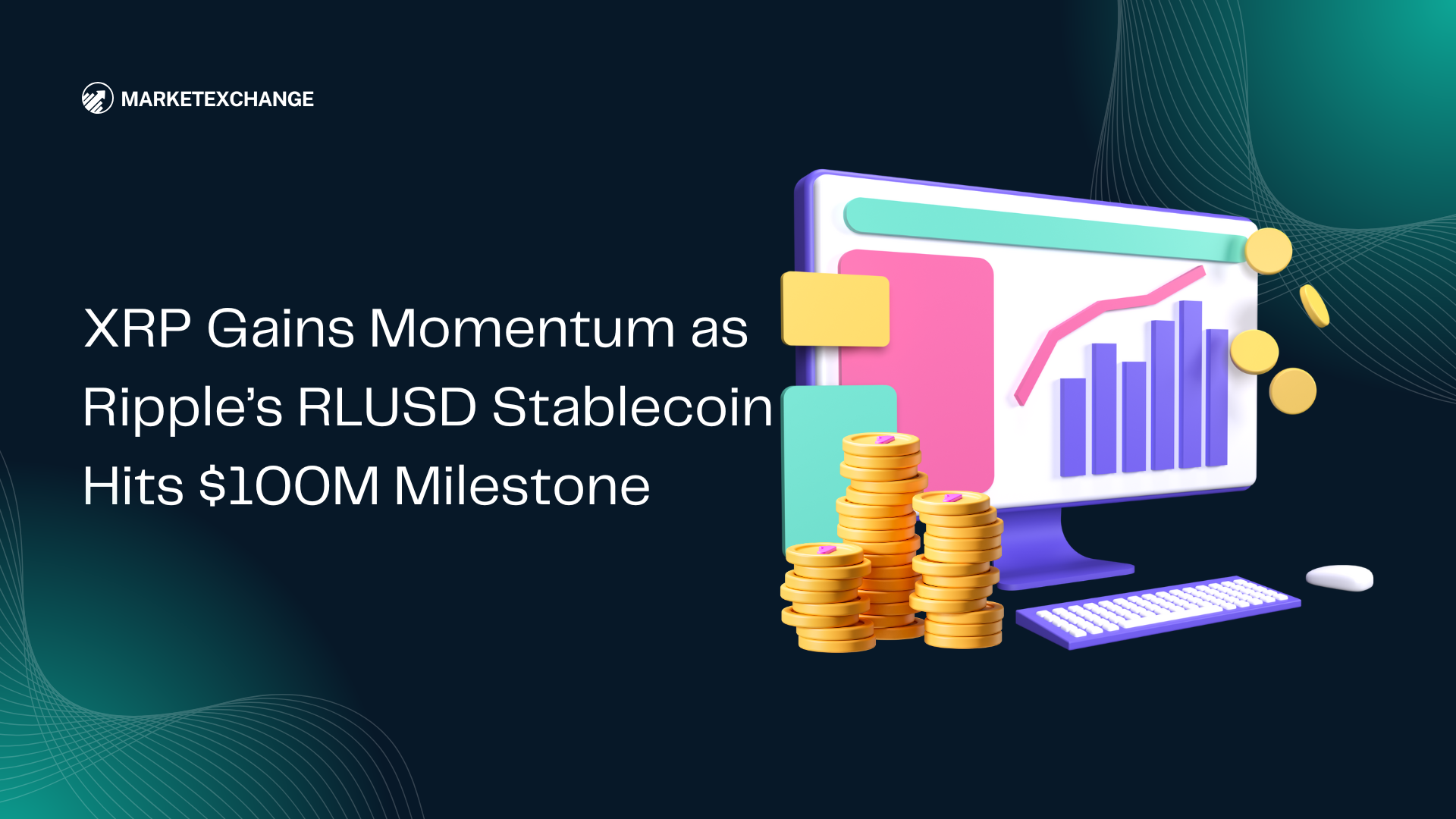
XRP (XRP), one of the longest-standing cryptocurrencies in the market, is surging back into the headlines after $100 million worth of RLUSD stablecoins were minted on Ripple’s payments platform. The move highlights a renewed focus on blockchain-based cross-border payments and positions Ripple for a stronger role in the global financial ecosystem.
The RLUSD issuance reflects growing institutional interest in tokenized stablecoins, particularly as Ripple advances its strategy to integrate real-world asset payments through its blockchain network.
This article explores the significance of this $100M mint, how it relates to XRP’s price action and utility, and where Ripple stands in the increasingly competitive payments landscape.
What Is RLUSD and Why It Matters
RLUSD is a Ripple-issued U.S. dollar-pegged stablecoin designed to enhance transaction speed, liquidity, and regulatory compliance for enterprise clients using Ripple’s network. Minting $100M in RLUSD is not just a milestone—it signals institutional confidence in Ripple’s payment rails and a broader shift toward on-chain settlement.
Unlike algorithmic stablecoins, RLUSD is fully backed by fiat reserves, offering transparency and stability. It serves as a bridge between fiat systems and blockchain-based transfers, eliminating the friction of traditional cross-border settlement processes.
For Ripple, RLUSD adds another layer of on-chain liquidity, allowing XRP to operate more effectively as a bridge currency, especially in regions where direct fiat-to-fiat corridors are inefficient or nonexistent.
XRP Price and Market Impact
XRP’s price responded positively to the RLUSD announcement, holding steady above $0.65 with bullish sentiment building. While XRP has struggled to reclaim its former highs in the post-SEC lawsuit era, this renewed focus on enterprise-grade infrastructure could restore investor confidence.
Technical analysts are watching the $0.70 resistance zone, with potential upside targets between $0.78 and $0.85 if momentum continues. On-chain data shows a spike in wallet activity and trading volume, suggesting a return of both retail and institutional interest in XRP.
The XRP Ledger’s low fees, fast finality, and support for tokenized assets like RLUSD make it a viable option for high-throughput payment systems, especially as other layer-1 networks face congestion and scaling challenges.
Ripple’s Payments Ecosystem Expands
Ripple has long focused on building an alternative to the SWIFT network, aiming to provide faster, cheaper, and more transparent global payment solutions. The RLUSD minting is another step toward mainstream adoption of Ripple’s On-Demand Liquidity (ODL) infrastructure.
Key highlights of Ripple’s evolving payments stack include:
- ODL transactions leveraging XRP for real-time cross-border liquidity
- Integration with central banks and fintech partners for CBDC and stablecoin projects
- Expansion into Latin America, the Middle East, and Southeast Asia, where traditional banking systems lag
- Launch of enterprise APIs and SDKs for institutional users
RippleNet’s functionality now rivals that of Visa B2B Connect, JP Morgan’s Onyx, and Stellar’s MoneyGram partnership, placing it firmly in the race for next-generation financial rails.
Ripple’s Legal Position and Competitive Landscape
The SEC’s high-profile lawsuit against Ripple in 2020 cast a long shadow over XRP, claiming the token was an unregistered security. However, 2023’s partial legal victory, where the court ruled that XRP is not a security when sold on exchanges, breathed new life into the project.
With that cloud partially lifted, Ripple is moving aggressively to scale its enterprise offerings, including RLUSD, and differentiate from rivals like:
- Stellar (XLM): Focused on remittances, with similar use cases but less enterprise traction
- Circle (USDC): Dominant in the stablecoin space, especially for DeFi and fintech
- JPM Coin: Used internally by JP Morgan, limited public blockchain exposure
- PayPal USD (PYUSD): A recent entrant, but backed by a major fintech player
Ripple’s differentiator remains its long-term commitment to regulatory engagement and its focus on tokenized payments for real-world financial use cases, rather than DeFi speculation.
Stablecoins and the Future of Payments
The $100M RLUSD mint is part of a larger narrative around stablecoin integration into the financial system. In 2025, stablecoins are no longer niche instruments for crypto traders—they’re central to:
- Cross-border business payments
- Remittances in underbanked regions
- Tokenized settlement for real-world assets (RWAs)
- CBDC interoperability and compliance
Governments are also warming to regulated stablecoins. The UK and EU have passed frameworks allowing stablecoin issuance under strict guidelines, and U.S. regulation may follow in 2025 with bipartisan support for clearer digital asset laws.
Ripple’s early movement in this space—through RLUSD and its XRP-backed architecture—could give it a first-mover advantage as financial institutions explore on-chain settlement.
Conclusion
Ripple’s successful minting of $100 million in RLUSD puts XRP firmly back in the spotlight. It represents not just a technical achievement, but a strategic move to solidify Ripple’s position as a leader in global digital payments.
As stablecoins become an integral part of the financial landscape, Ripple’s infrastructure—combining speed, compliance, and liquidity—offers a scalable solution for banks, fintechs, and governments seeking blockchain integration without compromising trust.
For XRP holders, the latest developments suggest that the utility narrative is returning, and with it, a new wave of institutional adoption may be just beginning.